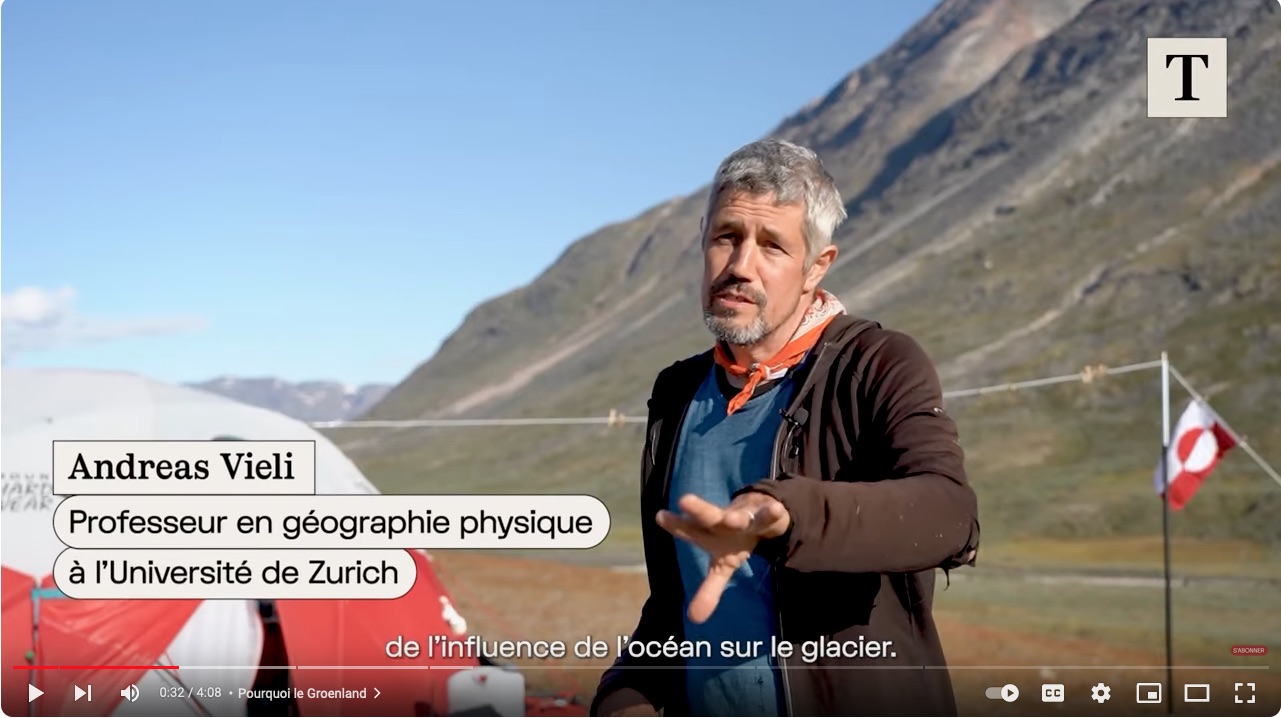Greenland, on the edge of a melting world
In Greenland, climate change has far-reaching consequences for glaciers, vegetation, biodiversity and especially for the population. Two journalists accompanied researchers from the interdisciplinary GreenFjord project to the front of the Qajuttap glacier, among other places. Glaciologists from the GIUZ are investigating the calving of the glacier there.
Image: Ethan Welty
The result is a comprehensive multimedia dossier with impressive images, videos and interviews about the global and local challenges of climate change. GIUZ's research is presented primarily in Part 1 "Les Glaces".
Directly to Part 1:
Sur le front mouvant de la calotte glaciaire, des Suisses prédisent la hausse des océans
Le Temps, 01.12.2023
Qajuttap Glacier: Calving front with dancing icebergs
Credits: Armin Dachauer, University of Zurich, GreenFjord
The GIUZ researchers are part of the Cryosphere cluster of the interdisciplinary GreenFjord project. Their aim is to study glacier calving - the chaotic break-up that creates icebergs that are carried far out to sea by currents.
Glaciers at the poles are suffering not only from atmospheric warming, but also from ocean warming. Below the waterline, the meltwater at the base of the glacier forms an icy river that meets the warmer ocean. As this fresh water is less dense, it rises to the surface. "This vertical circulation acts like a pump, sucking large amounts of warm water from the Atlantic Ocean to the base of the glacier and accelerating the melting of the glacier. The ice is breaking away from under the glacier's feet," explains Andreas Vieli.
The ocean is warming, accelerating the melting of glaciers
Video in English with French subtitles

